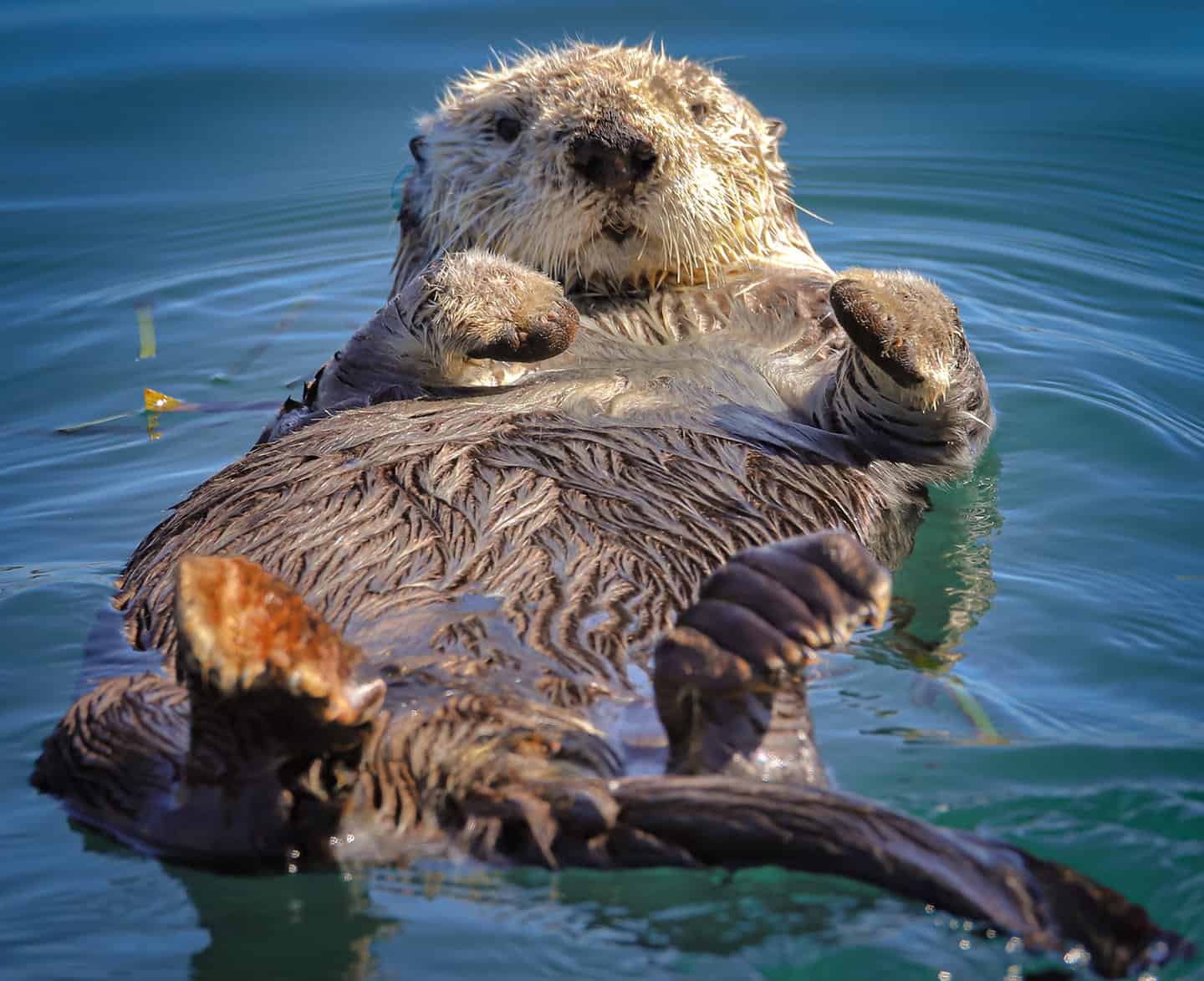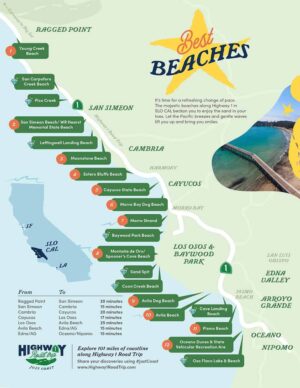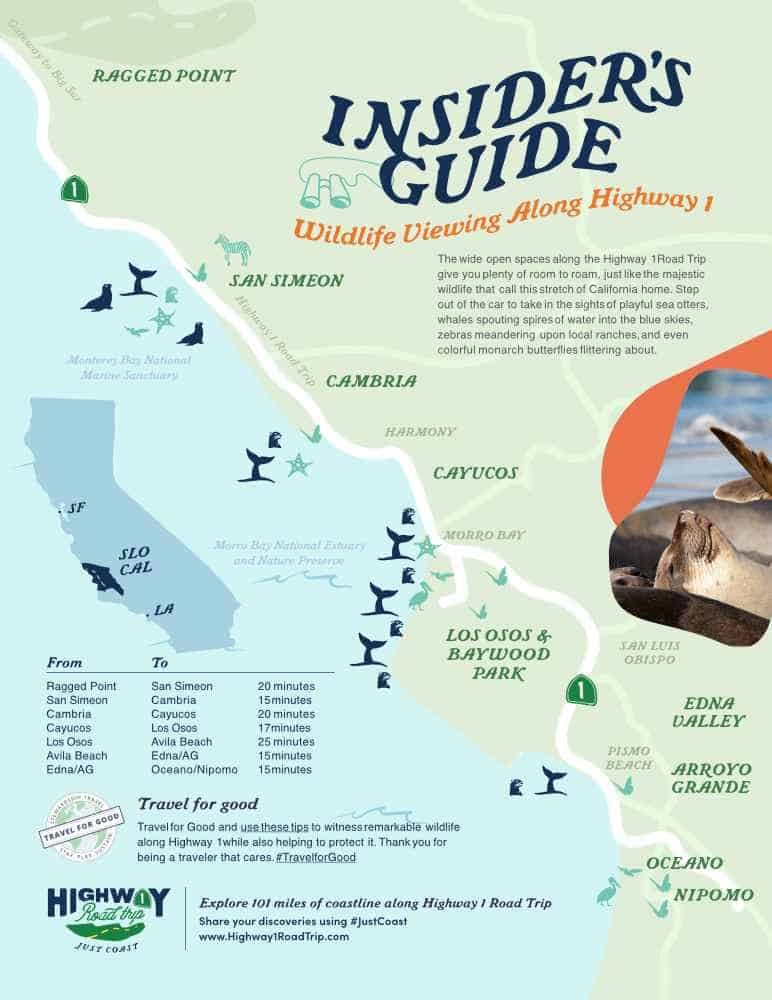When it comes to whale watching, the Central Coast boasts an embarrassment of riches, especially along the Highway 1 Road Trip. Here, whales, dolphins, sea otters, seals and seabirds play within full view of the shoreline.
To make the most of wildlife viewing, the Whale Trail organization has identified the best whale watching spots on the West Coast. Of those 100 Whale Trail sites, San Luis Obispo County contains a whopping ten. (That’s the most in one county along the entire California coast!) Six of those whale watching viewpoints stand along the Highway 1 Road Trip.
Each of the Whale Trail viewpoints offers interpretive signs containing helpful information about the sealife commonly seen there. Species, seasonal and migration facts augment the whale watching experience. (And one special site in San Simeon even provides telescopes for easy viewing!)
Before embarking on your whale watching adventure, be sure to read our wildlife viewing tips. You’ll also learn how you can help preserve this special stretch of coastline even as you enjoy its beauty.
When to go whale watching
When’s the best time for whale watching on Highway 1? This depends on what kind of whales you hope to see and where you hope to see them. Gray whales can usually be found migrating south from Alaska starting in October, then back again from mid-February to May. Less commonly seen blue whales (including humpbacks, fin, Bryde’s, sei, and Minke whales) migrate north during the summer, and visit the Central Coast annually for the summer krill bloom. Other species can be found at Whale Trail sites year-round, including common dolphins, California sea lions and sea otters.
What to bring while whale watching
Like any excursion, whale watching is an adventure, so plan accordingly. Bring binoculars if you have them, as these will definitely equip you to see more offshore wildlife. As for clothing, do as the locals do and dress in layers. Weather on the Central Coast is generally very mild, but can be breezy. Don’t forget a hat, your camera or phone, sunscreen, water, and any pocket guide to whale watching you may own.
See the Whale Trail
San Simeon Whale Watching
San Simeon has not one but two Whale Trail sites: in Old San Simeon and in the newer part of town. Both offer some of the best whale watching on the Central Coast.
How to get to The Old San Simeon viewpoint:
(Pier is Temporarily closed for repairs)
The Whale Trail sign stands at the San Simeon Bay Pier, overlooking William Randolph Hearst State Beach. To get there, head north on Highway 1 and turn left onto Slo San Simeon Road, just past the entrance to Hearst Castle. Find a spacious parking lot at the beach, and walk to the pier. Don’t forget to check out binoculars and guides for viewing San Simeon Bay Wildlife at the Coastal Discovery Center nearby.
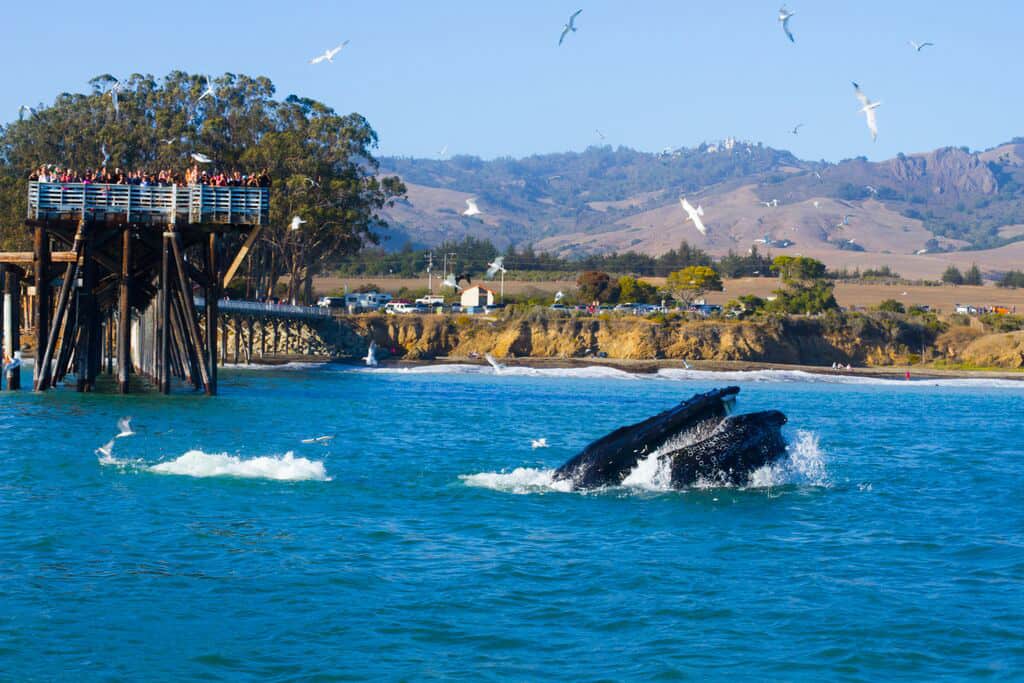
How to get to The Cavalier Resort viewpoint:
The Whale Trail sign stands on the boardwalk next to the Cavalier Resort at 9419 Hearst Drive. To get there, take Highway 1 North and turn left on Pico Avenue. Make another left on Hearst Drive and park at the Cavalier Resort. (Don’t miss the three telescopes available for wildlife viewing here.)
What you might see whale watching in San Simeon
Gray whales, minke whales, harbor seals, California sea lions and sea otters can be spotted in these sites often. And occasionally? People have spied harbor porpoises, Pacific white-sided dolphins, humpback whales and even orcas.
When to visit San Simeon for whale watching
Catch sight of a gray whale headed south in October, then again traveling north between mid-February and May. Other species can be seen year-round, with summer months being the most active.
Elevated whale watching viewpoint
An elevated spot is always beneficial for whale watching, as it gives greater perspective for spying blows and even breaching, occasionally. Just north of San Simeon lies Ragged Point, a charming spot in its own right, but also a terrific cliffside vista for whale watching. Park anywhere near the Ragged Point Inn, on the west side of Highway 1, and head for the cliffs. Keep an eye out for minke whales and gray whales—maybe even humpback whales or orcas. This is also a great place to see pods of dolphins looping along the ocean’s surface.
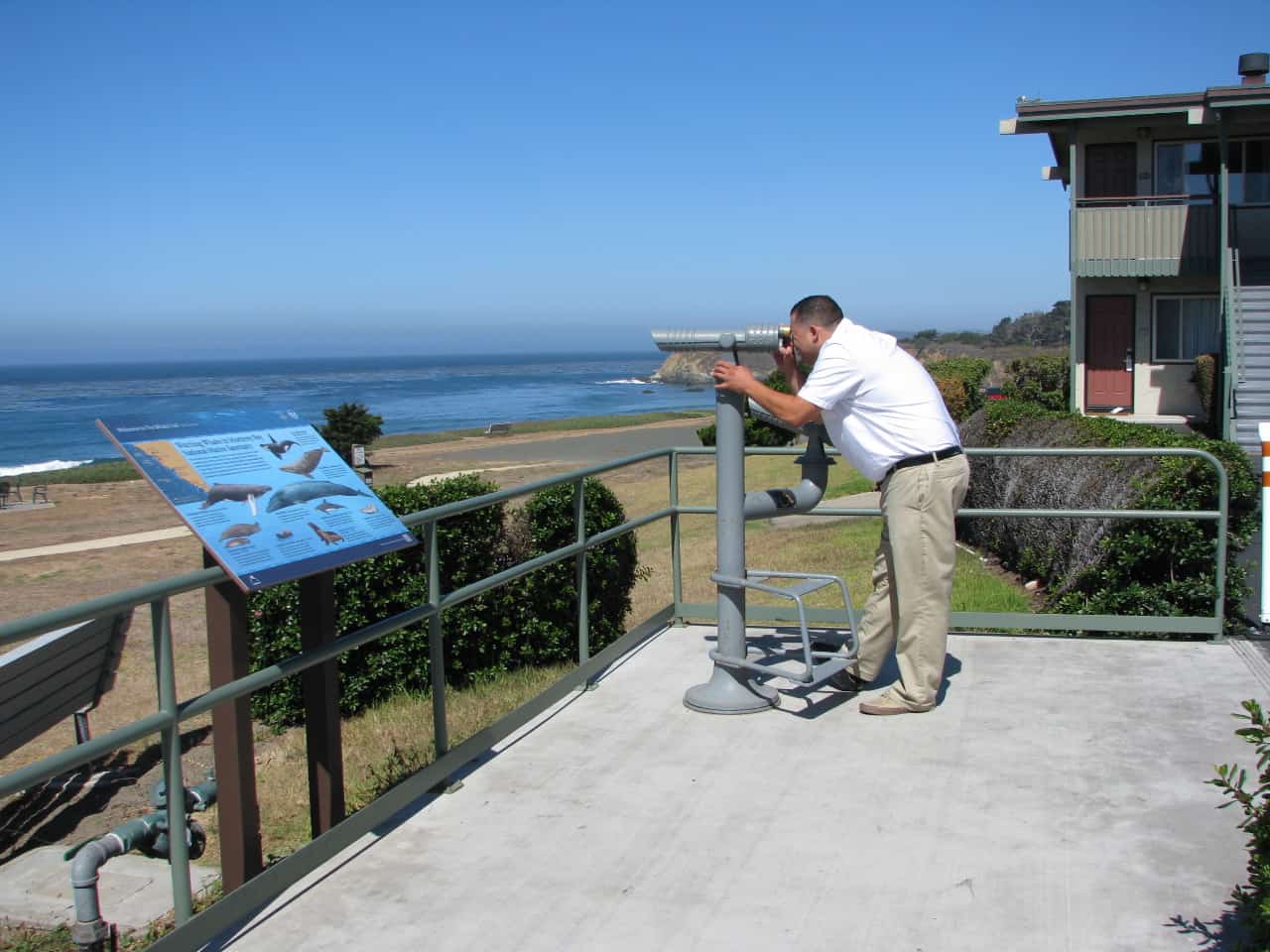
Cambria Whale Watching
Whale watching represents just one of the many fun activities available at Shamel Park in Cambria. The six-acre park offers access to Moonstone Beach and includes a seasonal swimming pool, children’s area, and picnic facilities.
How to get to Shamel Park
Take Highway 1 north to Windsor Boulevard, turn left and drive until you reach the park at the curve in the road. Park at the entrance, then walk west through Shamel Park. Just past the play structure, look for a Whale Trail sign that faces out over Moonstone Beach.
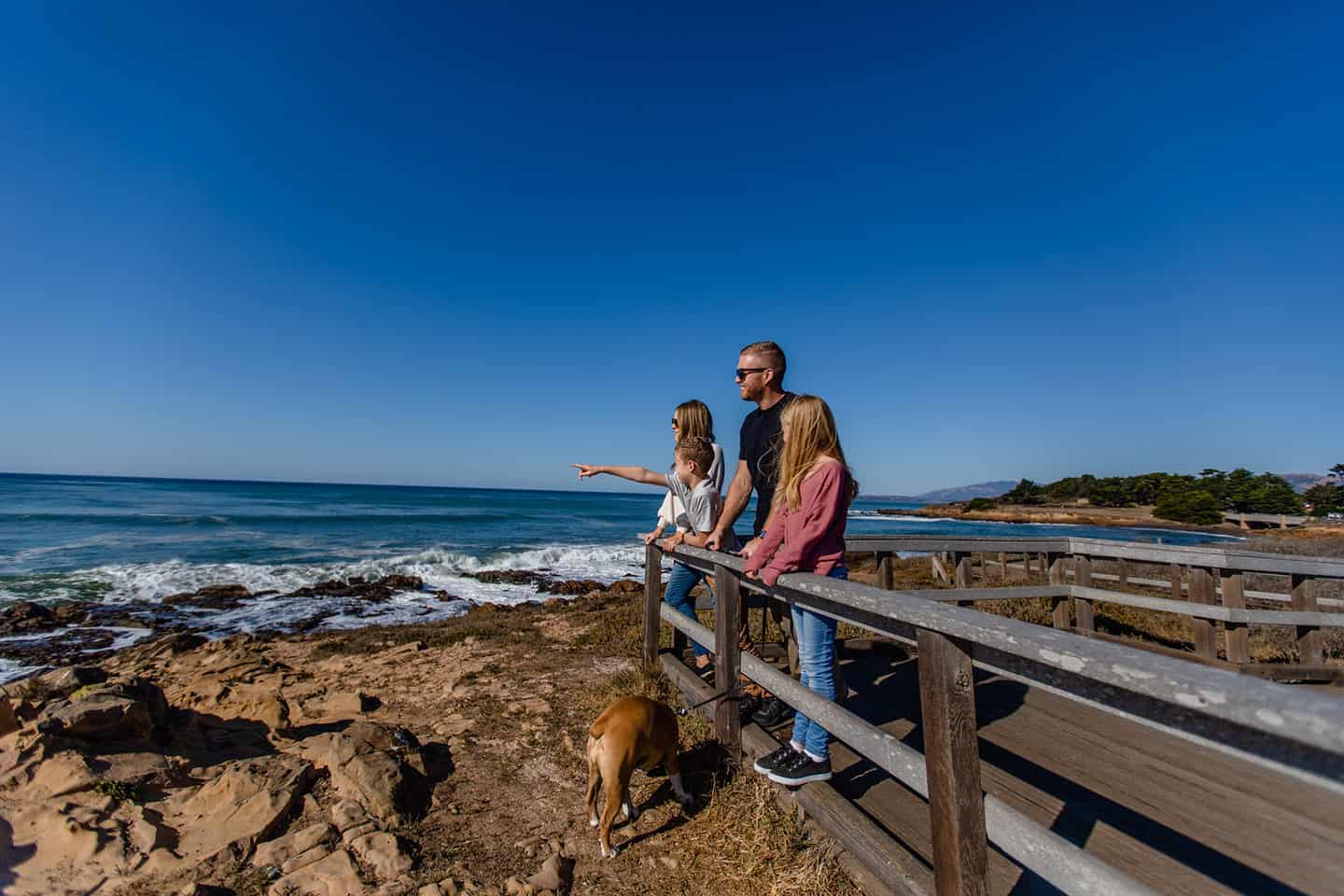
What you might see whale watching in Cambria
Commonly seen species include gray whales, Pacific white-sided dolphins, California sea lions, and sea otters. Sometimes, humpback whales, minke whales and harbor porpoises have also been seen.
When to visit Cambria for whale watching
Gray whale southern migration starts in December and ends in February, while the northern migration occurs through March and April. Other species can be seen year-round.
Elevated whale watching viewpoint
Located on the south end of Cambria’s coastline, the Fiscalini Ranch Preserve provides nice elevated spots for whale watching. The coastline trailhead stands at 2799 Bluff Trail in Cambria. Start here and find multiple benches and unobstructed views along the way.
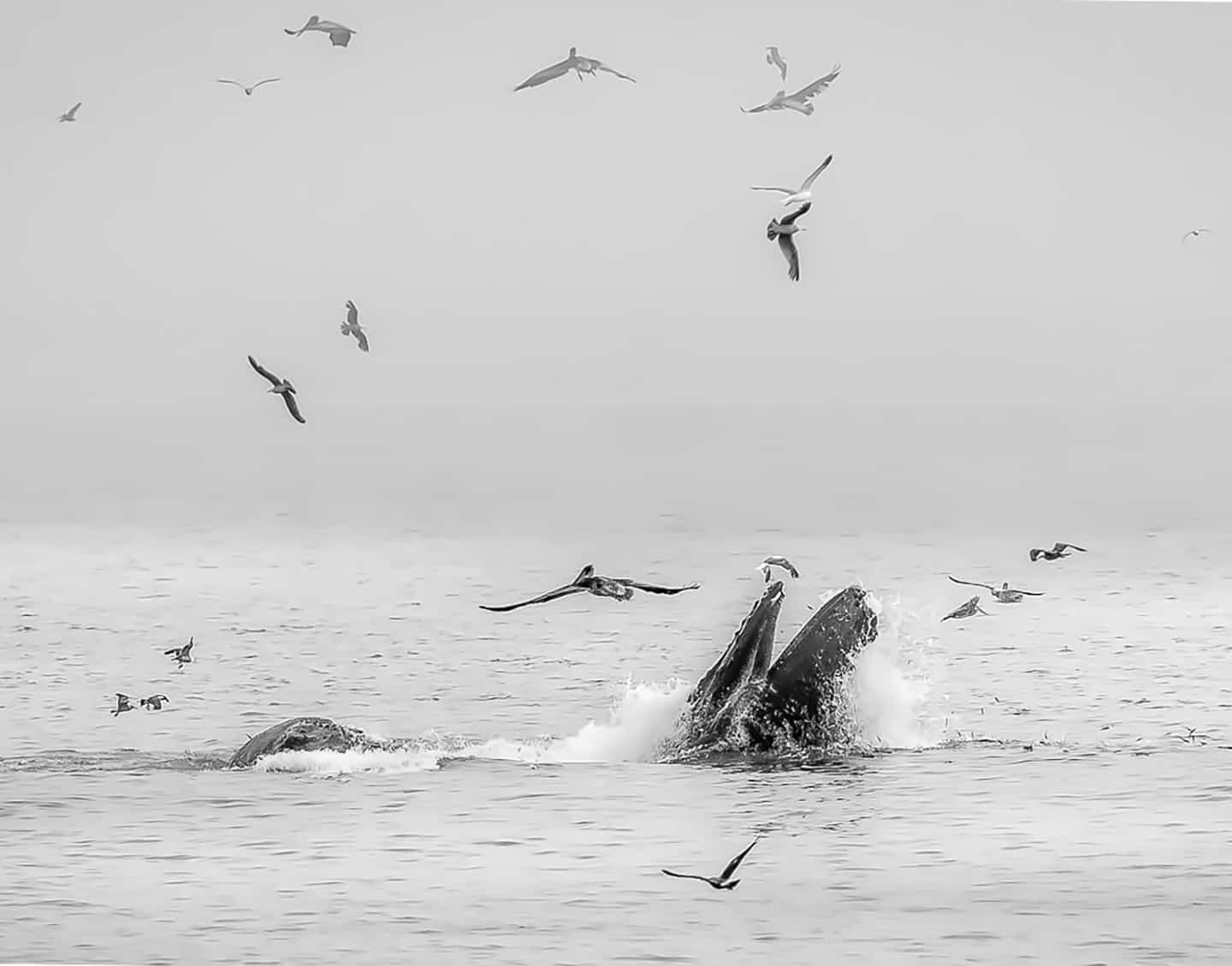
Cayucos Whale Watching
Very little beats whale watching in quaint, beachy Cayucos. The Whale Trail sign stands on the Cayucos Pier, originally built in 1872 by Captain James Cass, the town founder.
How to get to Cayucos Pier
Take Highway 1 South to North Ocean Avenue and make a right toward the beach. Turn right on Ocean Front Avenue and find parking along that street. Find the Cayucos Pier at 10 Ocean Front Avenue.

What you might see whale watching in Cayucos
Harbor seals, California sea lions, sea otters and humpback whales can be seen here, as well as the occasional orca and gray whale. Also, don’t miss sea urchins, anemones, crabs, starfish and more in the nearby tidepools!
When to visit Cayucos for whale watching
The best time to see gray whales is March and April, when mothers and calves swim closer to shore during migration. Watch for the acrobatics of humpback whales in spring and summer, as migration takes them south to feeding grounds. That species is known for its breaching, fin-slapping, and tail fluking.
Elevated whale watching viewpoint
Like the Fiscalini Ranch Preserve in Cambria, the Estero Bluffs north of Cayucos provide excellent elevated viewpoints for whale watching. Park in one of several turnouts on the west side of Highway 1 (on the southbound side of the road) and follow the trails that lie perpendicular to the coastline. Once you reach the bluffs, enjoy wide-open elevated views of the whales’ migratory path.
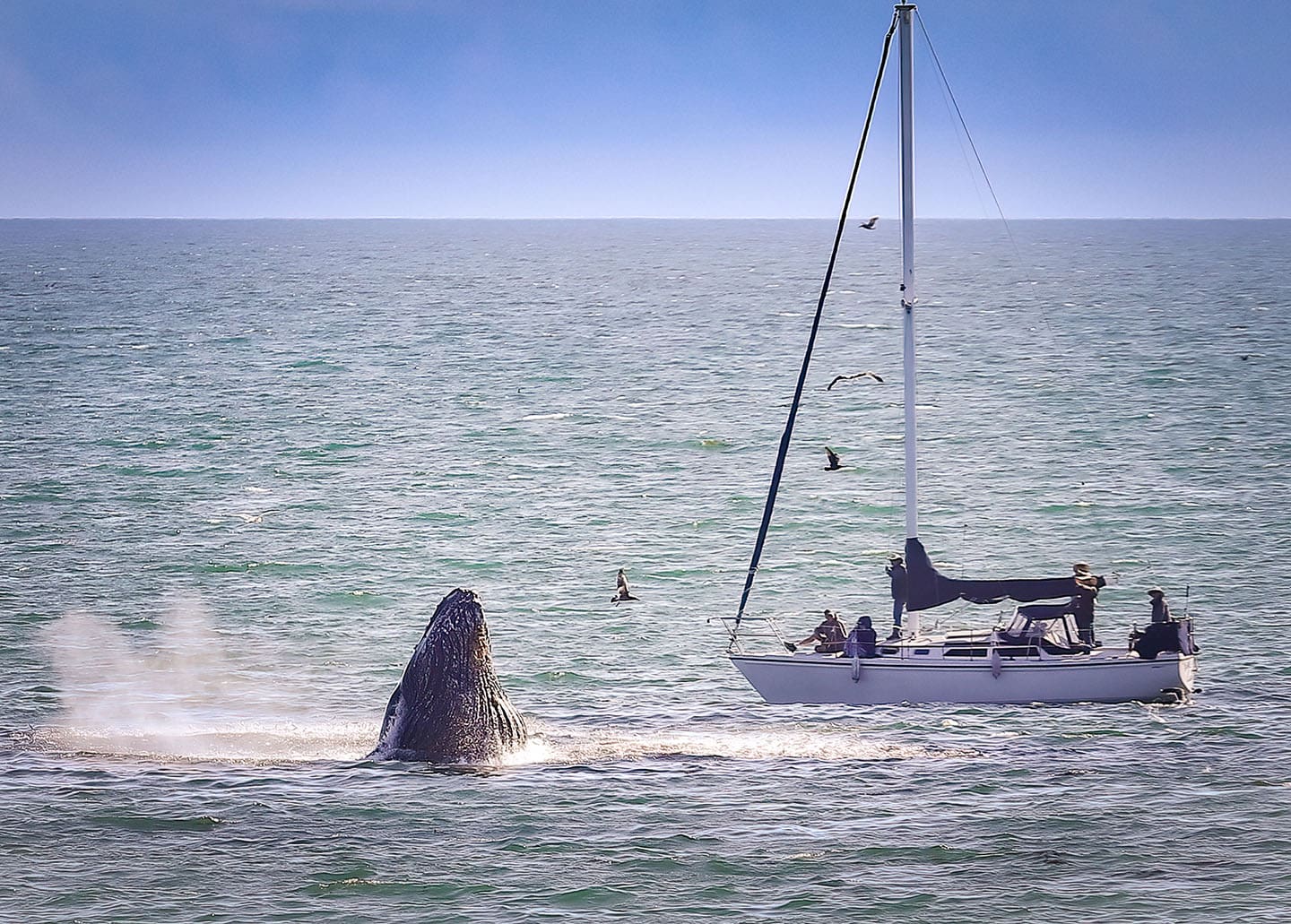
Los Osos-Baywood Park Whale Watching
Make a day of exploring majestic Montaña de Oro State Park in Los Osos-Baywood Park, and include whale watching in your fun.
How to get to Montaña de Oro
Drive south on Highway 1 and take exit 277 toward Los Osos/Baywood Park. Turn right onto South Bay Boulevard and again, right on Los Osos Valley Road. This becomes Pecho Valley Road, which enters Montaña de Oro State Park. The Whale Trail sign stands at the south end of the park, north of Corrallina Cove. Reach the sign 1.65 miles into the Bluff Trail (trailhead near Spooner’s Cove).
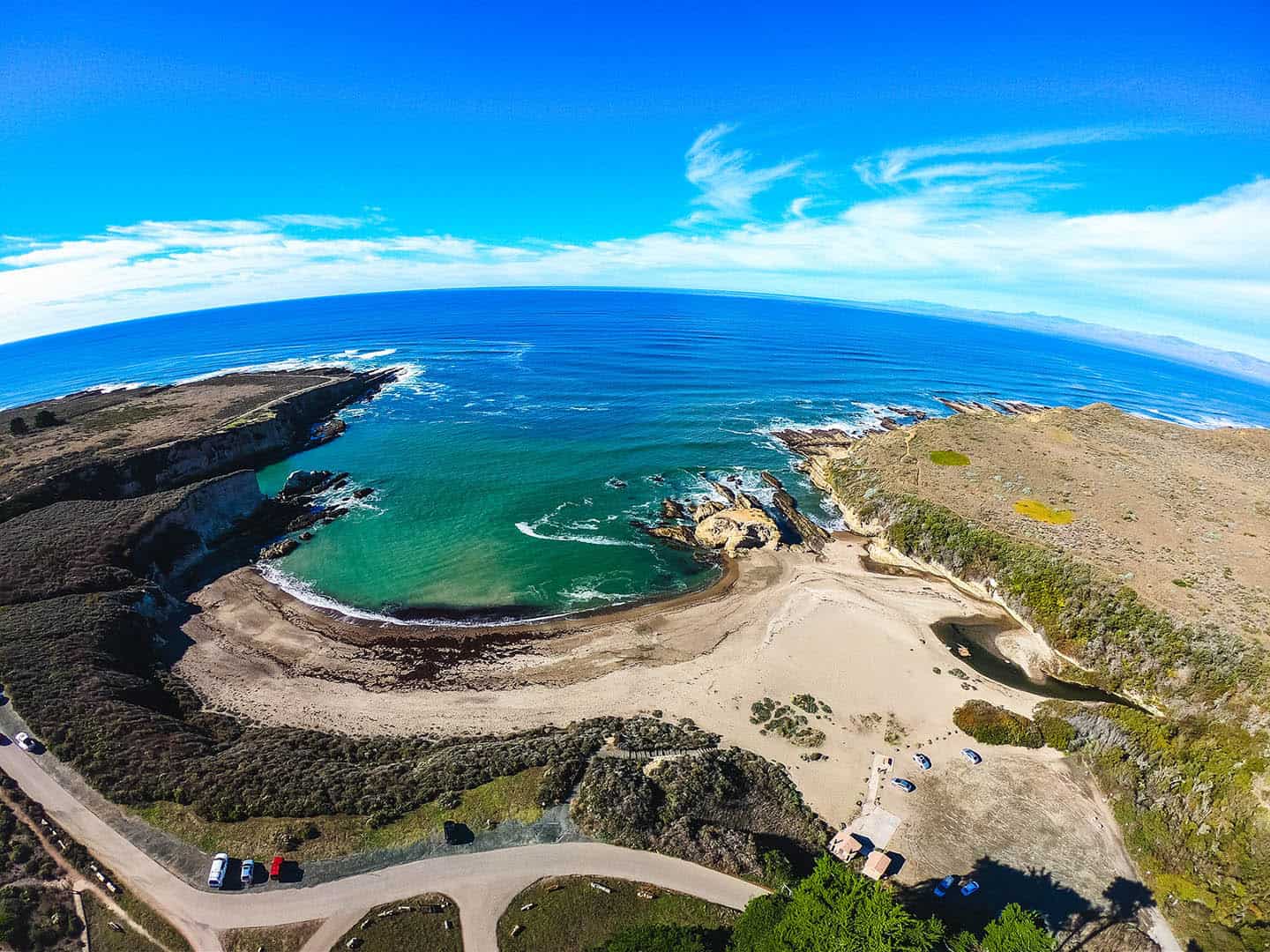
What you might see while whale watching in Los Osos
Gray whales, otters, seals, dolphins, seabirds and humpback whales can be seen here.
When to visit Los Osos for Whale Watching
The annual migration of gray whales brings them offshore from December through April. All other species can be seen year-round, but especially active in summer.
Elevated whale watching viewpoint
Deep into Montaña de Oro State Park lies the westernmost point in Los Osos. This is Point Buchon, a terrific elevated spot for spying whales offshore. Access the point via the Point Buchon Trail; there is parking right by the trailhead. The trail crosses through property owned by PG&E, which limits total hikers to just 275 per day. That being the case, the early bird gets the worm: the earlier you head out on this whale watching adventure, the better.
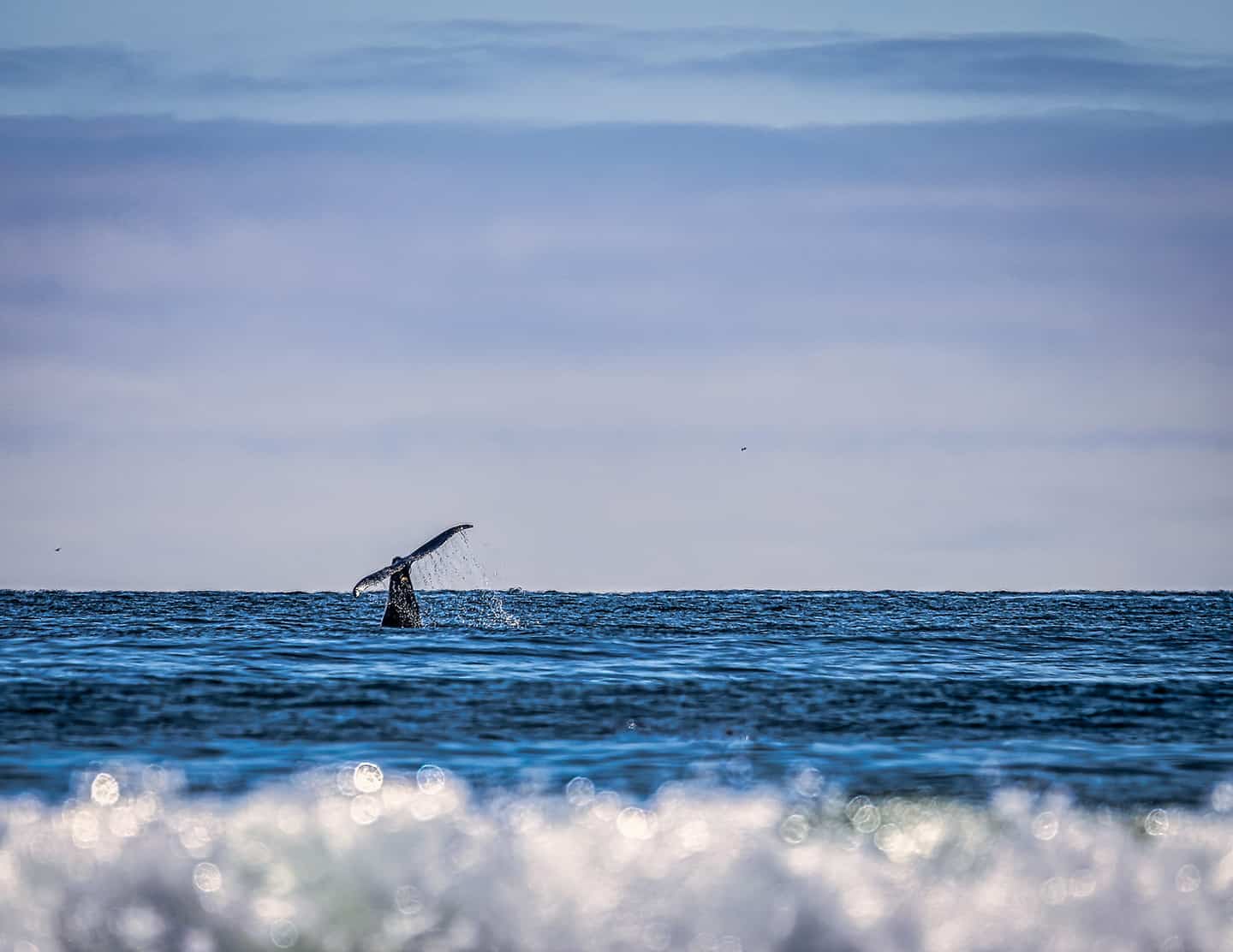
Avila Beach Whale Watching
How to get to Avila Beach
What you might see whale watching in Avila Beach
When to visit
Best whale watching viewpoint
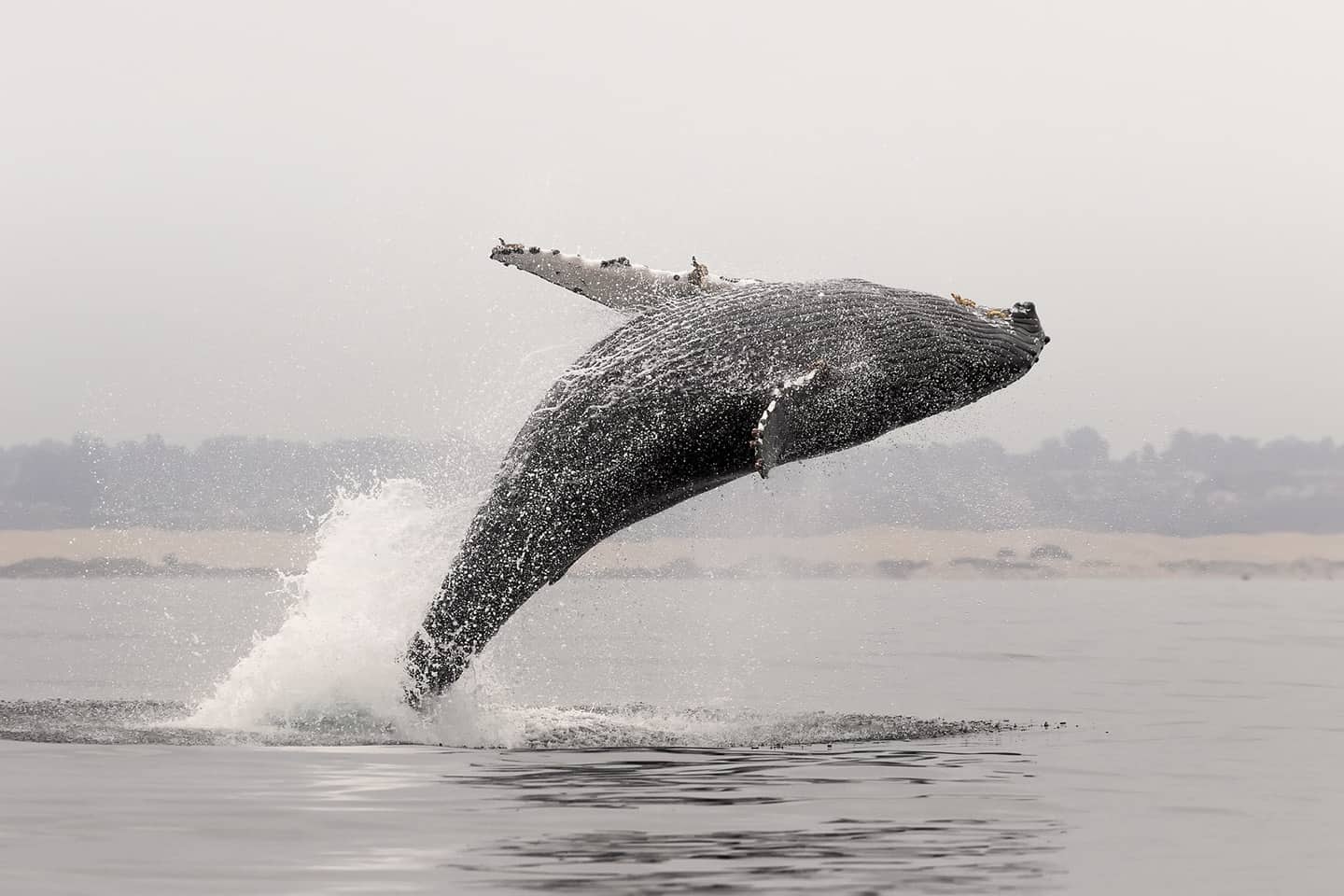
Nipomo & Oceano Whale Watching
The rugged California beach towns of Oceano and Nipomo sit at the end of one of the state’s largest dune complexes. Watch the whales ― then watch visitors driving and horseback riding on the Oceano Dunes State Vehicular Recreation Area.
How to get to the Oceano Dunes
The Whale Trail sign stands on the overlook to Pismo State Beach at West Grand Avenue (next to Fin’s Seafood parking lot). From Highway 101 South, take exit 191A for CA-1 S toward Pismo Beach/Wadsworth Ave. Continue on Highway 1/Dolliver Road for two miles. At the intersection of Grand Avenue, turn right and find parking where Grand Avenue terminates at the beach.
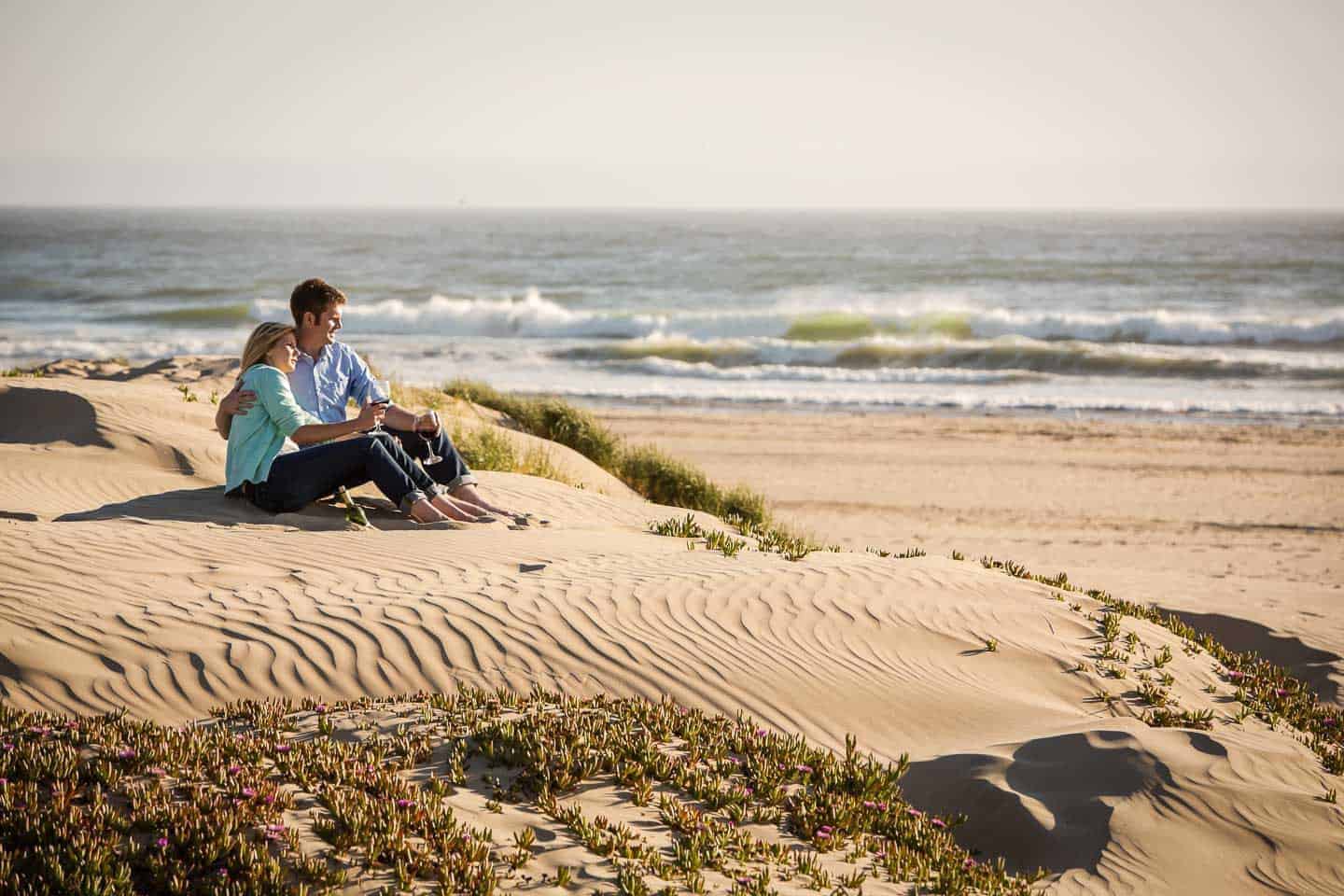
What you might see
Keep your eyes open for gray whale spouts, which resemble a heart shape. Also look for humpback whales, whose spouts are taller and shaped like a column.
When to visit
Find gray whales migrating between December and April, while humpbacks can be spied offshore throughout the year. Don’t miss this site’s plentiful seabird population, either!
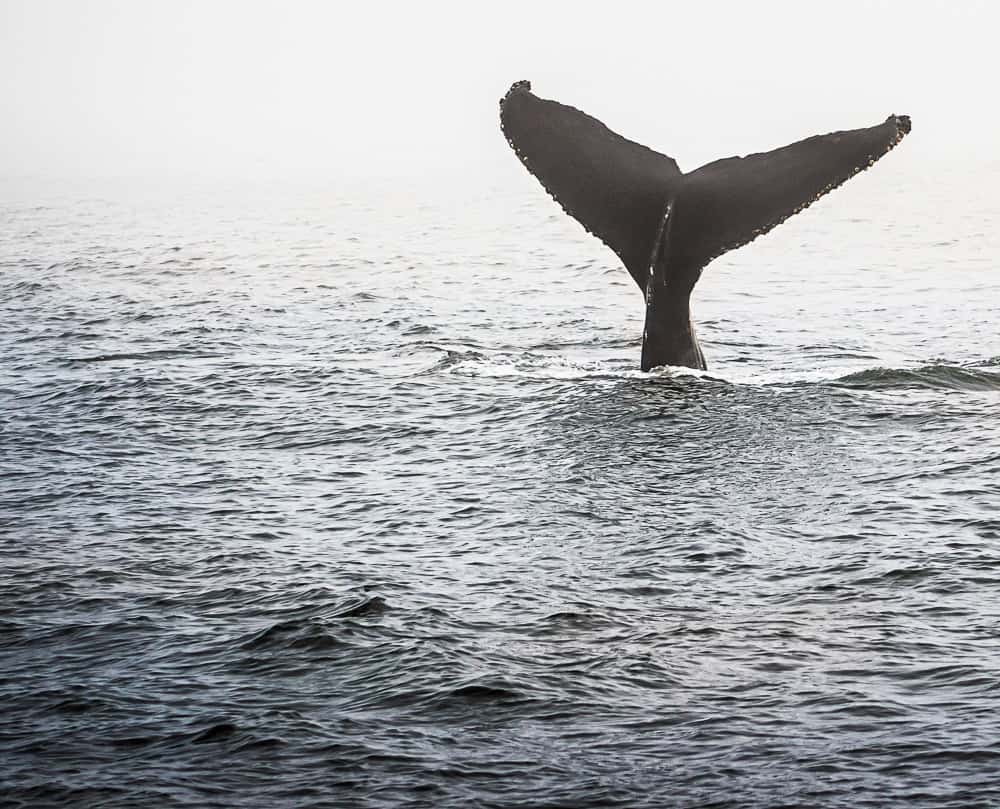
Bonus spots
Morro Bay offers an excellent viewpoint for seeing gray whales, humpback whales, minke whales and Risso’s Dolphins. To reach one of the best spots, turn west onto Terba Buena from Highway 1. Make a right on Toro Lane and drive to the bluff.
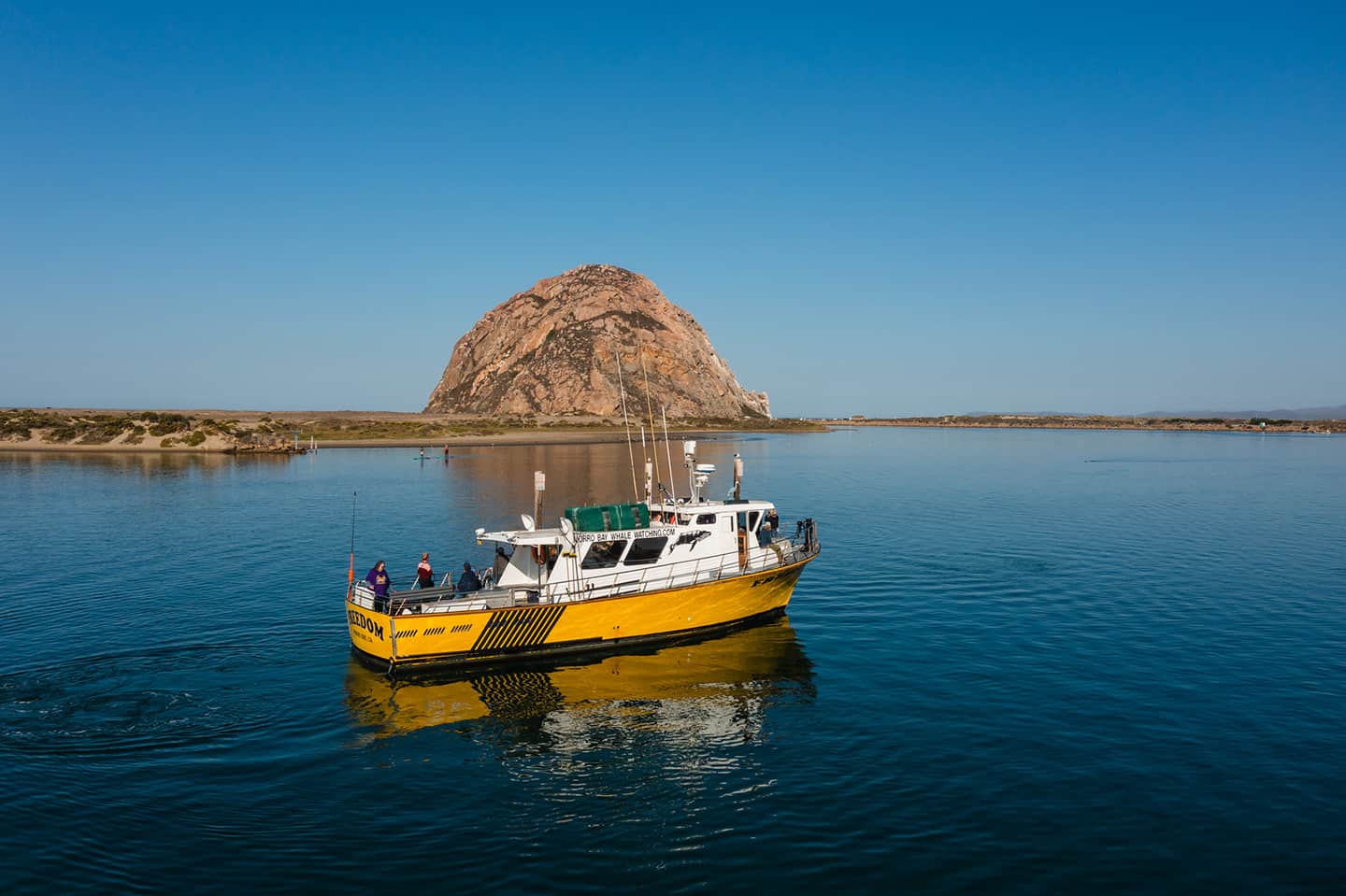
Pismo Beach is another Whale Trail site; the interpretive sign sits beside the Pismo Pier. One downside of this location is its crowds, as the pier is a major tourist attraction. For a quieter, more accessible whale watching experience, head to one of the sites mentioned previously.
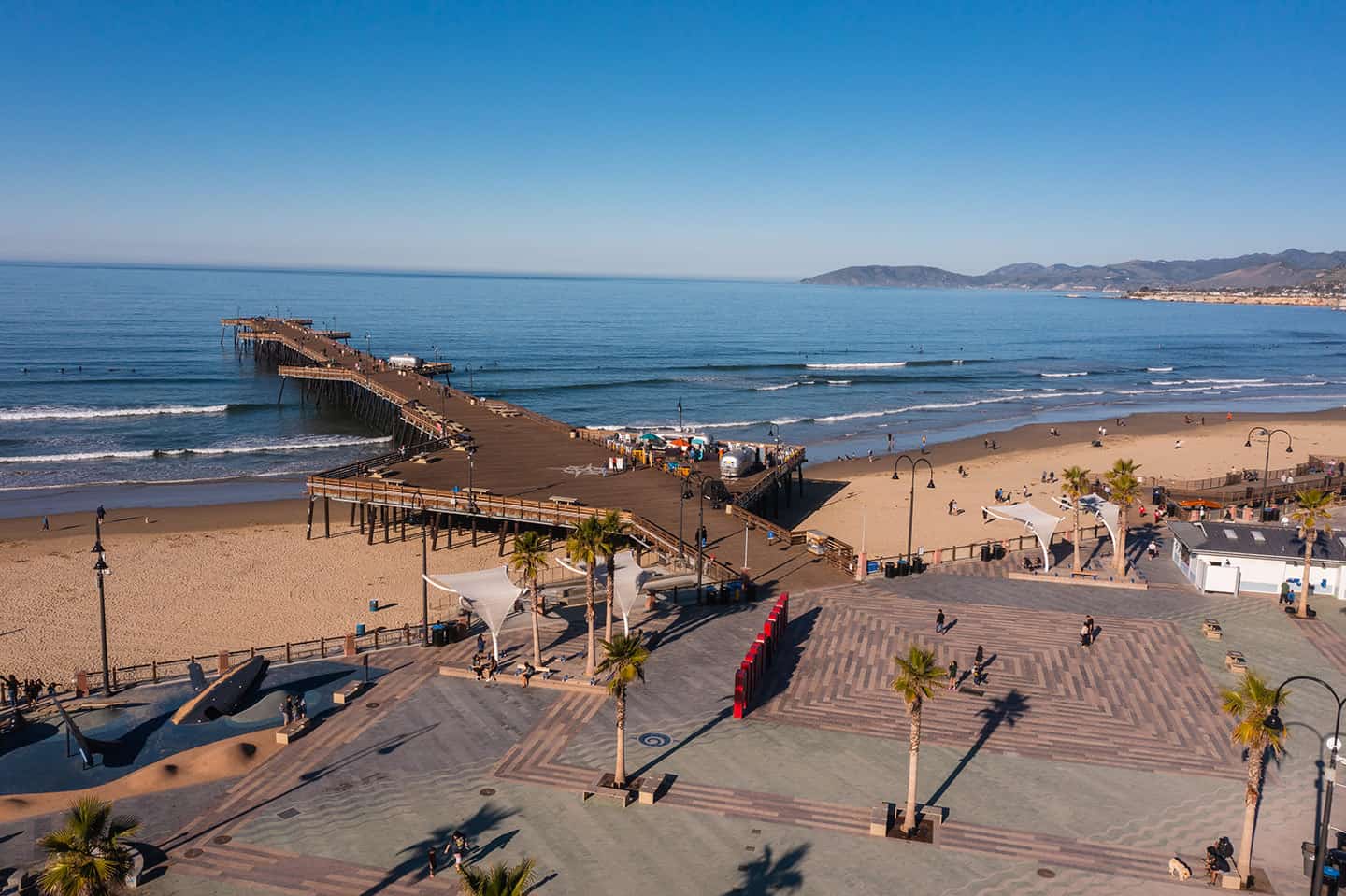
More wildlife viewing along Highway 1
Elephant Seals
Thousands upon thousands of Great Northern Elephant Seals make their home at the Piedras Blancas Elephant Seal Rookery in San Simeon. Throughout the year, visitors can witness the life cycle of this majestic creature, including birth, molting, and mating. Enjoy an elevated viewing area with sightlines of all the action, as well as interpretive signs, free parking, and expert docents. The rookery has hosted up to 9,000 elephant seals at a time, with the height taking place between December and March. As one of the largest colonies of elephant seals in the world, this is a fascinating, free, and family-friendly attraction on Highway 1. Looking for more to do in the area? Schedule a tour of the nearby Piedras Blancas Lighthouse, still active today. For a beach day, head to the W.R. Hearst Memorial State Beach to swim, hike, fish, or sunbathe. And don’t miss the world-famous Hearst Castle, the 90,000-square-foot estate of newspaper tycoon William Randolph Hearst.
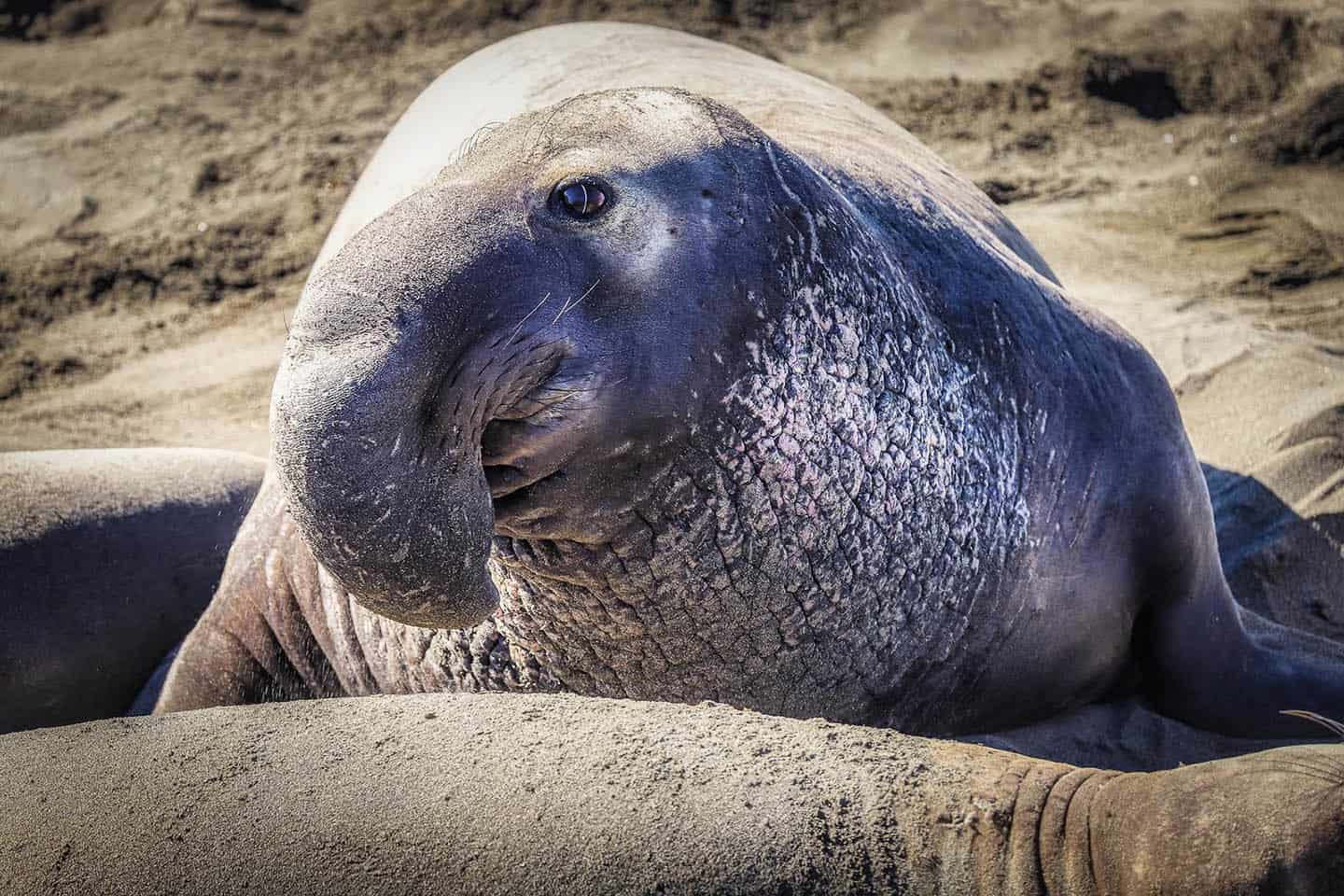
Bird watching
This stretch of Highway 1 is one of North America’s most abundant bird-watching areas. While many species live here full-time, many other hundreds of species migrate through the coastal communities on their way south or north. The Pacific Flyway is the West Coast’s major flightpath for migration, and it travels over Highway 1. Many birders specifically find the Morro Bay National Estuary an ideal spot for seeing multiple species. Located between Morro Bay and Los Osos-Baywood Park, the estuary is a federally-protected open space where wildlife thrives. Also in Los Osos-Baywood Park, the Sweet Springs Nature Preserve boasts 32 acres of forest, coastline, and open space. The preserve is managed by the Morro Coast Audubon Society, and plays host to a remarkable number of bird species. Bring your binoculars or telescope, your watercolors and brushes, and a notebook to record your findings. You’re sure to note several new species and enjoy the peace and quiet of their natural habitat.

Monarch butterflies
The enchanting orange, black and white wings of the Western Monarch Butterfly are a common sight here on this stretch of Highway 1. But in the midwinter months into spring, they are especially prevalent! Enjoy access to several of the Monarchs’ favorite migratory spots here, including in Nipomo, Los Osos-Baywood Park, and the most famous Monarch grove in Oceano. During the peak migration month of February, Monarchs cover the length of eucalyptus tree branches, numbering in the thousands in good years. At the Oceano Monarch Preserve, take advantage of docent expertise, free talks about the butterflies, comfortable benches and picnic tables. At the height of Monarch traffic, you’ll even be able to shop at the mobile Monarch gift shop and use high-powered telescopes to see the butterflies in the trees. This is an experience worth repeating from one year to the next, as these beautiful creatures are always fascinating and breathtaking.
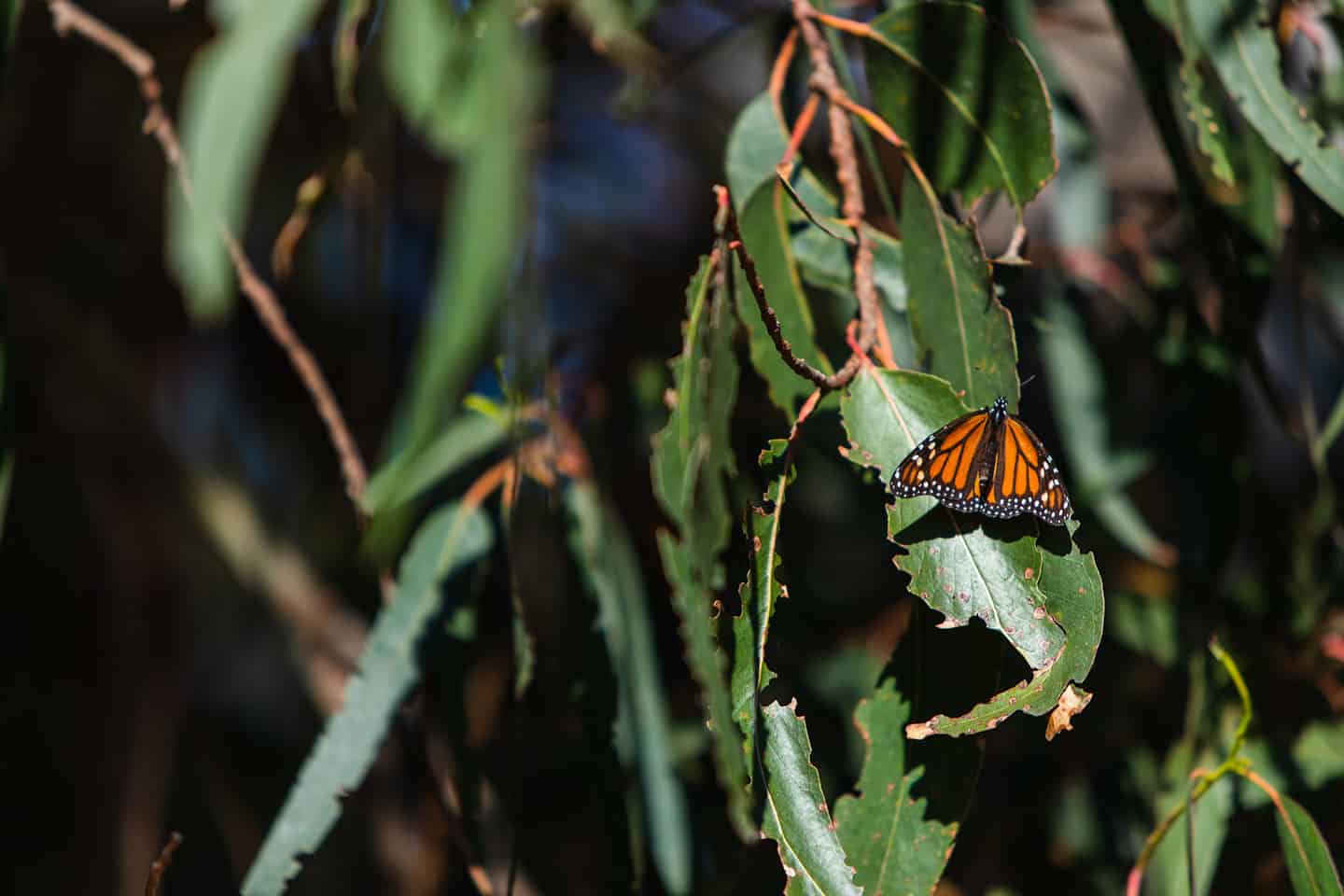
Otter spotting
Charming, cuddly, and endlessly entertaining, California Sea Otters are famous for capturing the hearts of those lucky enough to see them in person. Spot these cuties along our stretch of Highway 1 coastline, including in San Simeon, Cambria, Cayucos, Morro Bay, Los Osos-Baywood Park, and Avila Beach. While sea otters live along Highway 1 year-round, they’re most active throughout winter and spring. Look for them in and around kelp beds, where they sleep on the surface, hunt, and care for their young. Because they like the natural safety of shoreline, coves and estuaries, sea otters can often be found there. Some otter spots lie in secluded areas without many people around. But several otter habitats are right at the center of the action, such as the southern end of the Morro Bay Embarcadero. Whether you’re walking a pier, a beach, or a boardwalk—or kayaking along shore—there’s a good chance you’ll come across these playful critters.
